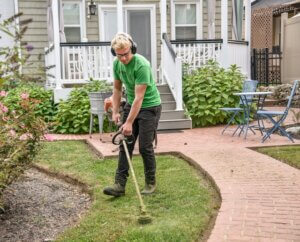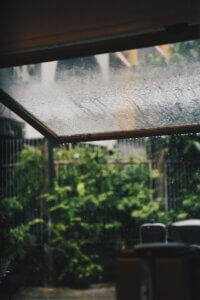Water Damage Restoration: Preventing Water Damage During Storms
Water Damage Restoration: Preventing Water Damage During Storms
Summary
AllAces emphasises the importance of preventive measures to mitigate water damage during storms. Outlining preventative steps including identifying vulnerable areas, maintaining drainage systems, sealing gaps, strategic landscaping, and using advanced monitoring systems. We also stress the advantages of hiring professional water damage restoration experts with specialised skills and equipment when disaster strikes.
We all understand the unpredictable nature of storms, but what we often underestimate is the severe water damage that can follow requiring extensive water damage restoration. As a property owner, taking timely and appropriate steps to prevent water damage during storms is crucial. In this comprehensive guide, we delve into actionable measures, industry-standard practices, and expert recommendations to fortify your property against water damage.
Identifying Vulnerable Areas in Your Property
Before you take preventive measures, identifying the weak spots in your property is paramount. Focus on areas such as basements, roofs, windows, and doors where water is likely to infiltrate. Professionals recommend an annual inspection to identify vulnerabilities that may be less obvious.
Drainage Systems
The drainage system plays an indispensable role in safeguarding your property. Regular maintenance of gutters, downspouts, and drains can significantly reduce water accumulation. Ensure your drainage system is free of debris and consider installing gutter guards for long-term protection.
Sealing and Waterproofing
Cracks and gaps are the main entry points for water. Using high-quality sealants and waterproofing materials, reinforce areas around windows, doors, and walls. Apply a waterproof coating to your basement walls and floor to prevent seepage.
Landscaping
Believe it or not, strategic landscaping can also prevent water damage. Planting shrubs and grass helps minimise soil erosion, and installing a French drain can direct water away from your property.
Roof Reinforcement
Your roof bears the brunt during a storm. Roof inspection and timely repairs can avert substantial water damage. Use high-quality, weather-resistant materials for roofing. Moreover, inspect your shingles, sealant, and flashing to ensure they are in optimal condition.
Windows and Doors
Invest in storm-resistant windows and doors that come with additional layers and sealing properties. These will not only help prevent water damage but will also provide better insulation.
Advanced Monitoring Systems
In the age of smart homes, leveraging advanced monitoring systems can be extremely beneficial. These systems can alert you about leaks or pressure changes in your water supply, allowing you to take immediate action.
We cannot stress enough the importance of implementing preventive measures to save on water damage restoration costs down the track. Each step you take contributes significantly to safeguarding your property against water damage during storms. Make these practices a part of your routine property maintenance, and you will be well-prepared when the storm clouds roll in.
Hiring Professional Water Damage Restoration Experts
When disaster strikes, hiring professional water damage restoration experts offers numerous advantages. The most crucial being their specialised skill set and advanced equipment for effective water extraction, drying, and mould remediation. Water damage restoration professionals adhere to industry standards, ensuring a thorough cleanup that minimises the risk of future structural issues or health hazards like mould growth. They also facilitate a quicker water damage restoration process, allowing you to return to your normal life with minimal disruption. Moreover, expert teams can help the insurance claims process, making the entire project more manageable. Their comprehensive services ultimately save you time, reduce long-term costs, and offer peace of mind.
FAQs
How quickly should I contact a water damage restoration company after discovering water damage?
Time is of the essence when dealing with water damage. It’s advisable to contact a professional water damage restoration company immediately—within 24 to 48 hours of discovering the damage. Delaying the process can lead to further damage, including structural issues and mould growth, which could increase the restoration costs.
Can I handle water damage restoration myself?
While it may be tempting to tackle water damage on your own, it’s generally not recommended unless you’re dealing with a minor issue like a leaky faucet. Professional water damage restoration involves specialized techniques and industrial-grade equipment for water extraction, dehumidification, and sanitation, which most homeowners don’t have access to. DIY methods can often exacerbate the issue, leading to more long-term damage and costs.
How long does the water damage restoration process take?
The duration of the water damage restoration process can vary widely depending on the extent of the damage, the methods used for restoration, and other situational factors. Generally, the initial assessment and water extraction can be completed within the first 48 hours. Drying and dehumidification may take several days to a week, while more complex tasks like mould removal and structural repairs can extend the process to several weeks. It’s best to consult with a professional restoration company for a tailored timeline based on your specific situation.
Why Choose AllAces?
AllAces Cleaning & Restoration has more than 35 years of industry experience, handling both domestic and commercial water damage restoration projects. Our IICRC-certified technicians have access to the latest technology and equipment to ensure the best results possible, returning your property to a pre-loss condition.



